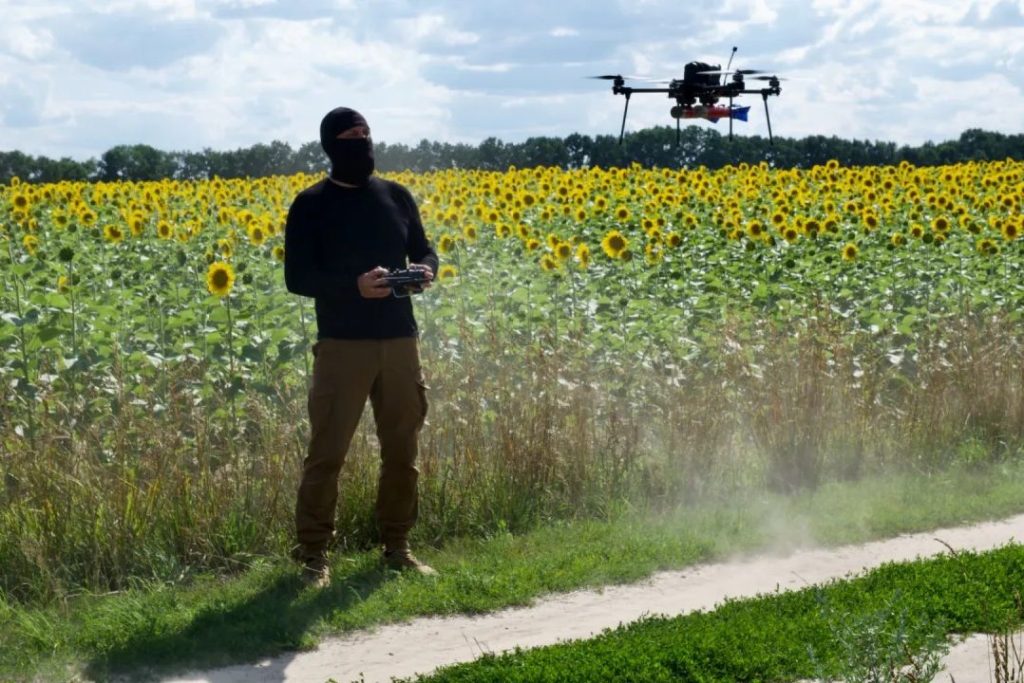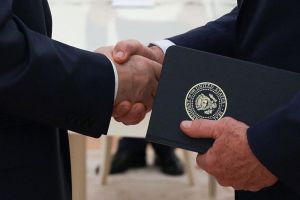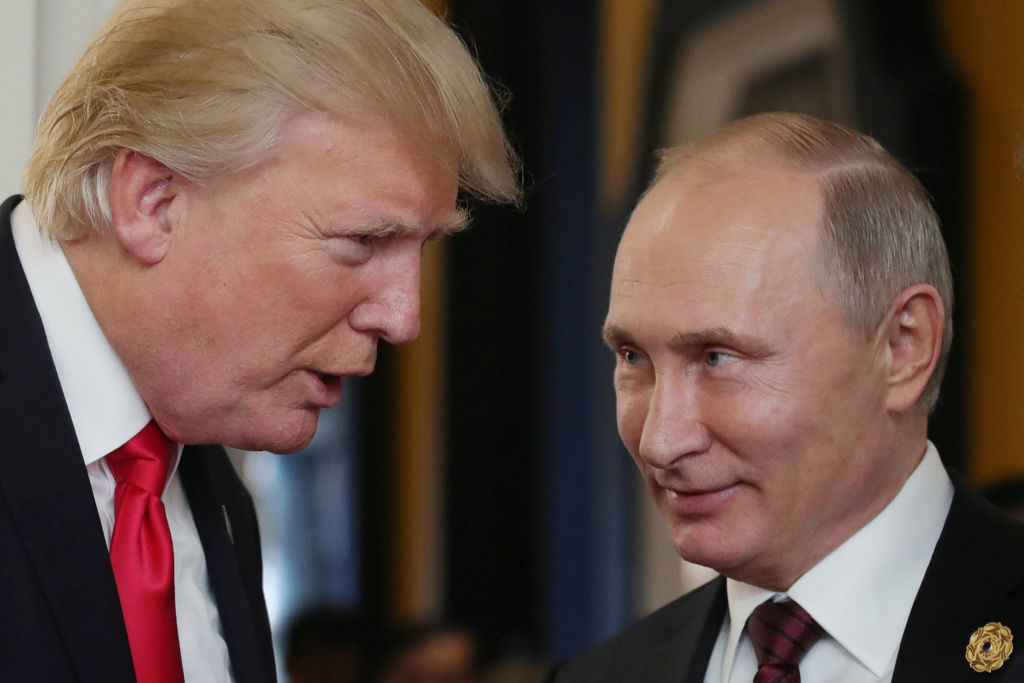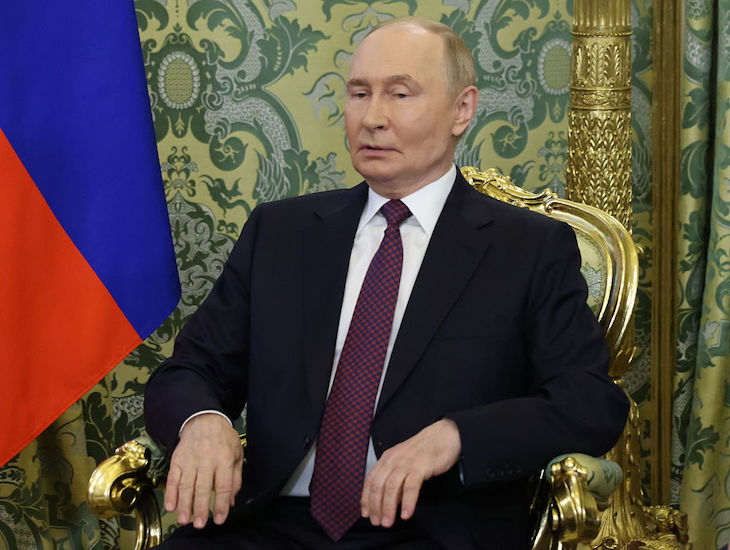Kyiv
“We will end this war with drones,” says Mykhailo Fedorov, deputy prime minister of Ukraine. We meet at the Ministry of Digital Transformation, which he runs in Kyiv. It has become crucial to the counteroffensive. To reclaim occupied land, Ukrainian troops need to remove miles of landmines, and can do so only if kept safe by swarms of drones that fly ahead, searching for the enemy. Russia has drones too — many more of them — and is adept at jamming and downing Ukraine’s fleet. A drone arms race is under way.
Soon after his election, President Volodymyr Zelensky asked the then twenty-eight-year-old Fedorov to run a new ministry aimed at turning Ukraine into a digital country (or, as he put it, a “paperless state”). At first, the idea was to move common government services onto an app called Diia. Once the war intensified, the brief soon expanded to defense procurement. Fedorov’s remit was to bypass a slow-moving and often fraud-addled civil service. He hoped to incentivize and energize both the voluntary and private sectors. The aim was to out-produce and out-innovate the Kremlin.
At thirty-two, Fedorov is now a veteran. His “Army of Drones” program has been designed to encourage Ukrainian companies to make thousands of drones and train a similarly large number of operators. This unprecedented collaboration of private enterprise and the national military has so far seen twelve drone assault companies created, with about sixty-five soldiers apiece. Fedorov says six more will be created soon. “We would like drone assault companies in each brigade.”
The objective is to make drones more quickly than Russia can shoot them down. There are no official numbers, but some estimates have said Ukraine is losing 10,000 a month. When Vladimir Putin invaded last February, only seven companies in Ukraine supplied drones to the army, in large part because many others had been driven abroad by high taxes and regulations. Now there are forty firms making drones directly for the defense ministry, with more on the way. Fedorov has created incentives: there are fewer custom checks and restrictions, red tape has been cut and companies can make a 25 percent profit on any drones they sell. Until recently, the cap was 1 percent.
“We’ve signed more contracts with Ukrainian drone manufacturers in the past two months than we did all of past year,” says Fedorov. Now it takes just six weeks to secure a deal, when it once took years. Combat testing and price assessment are carried out by the military, and feedback is then delivered. “You make the improvements, and the state gets to know you for future contracts,” says Fedorov. “But everything that the state does can be done more effectively by business and an active public.” Even the training of drone operators, like the drone-making, is done independently of the government.
Military drones come in all shapes and sizes, with prices starting from as little as $380 each. There are fast, single-use kamikaze drones and grenade drones, small enough to be held in one hand. A more recent development is the semi-submerged boat drone, which has been used to attack Russian warships and bridges, often in co-ordination with aerial drone attacks.
But manufacturing drones is the relatively easy part; finding and importing enough components to launch the production process and keep it going are much harder. Entrepreneurs are urgently needed.
One such is Ihor Krynychko. When I visit his little factory outside Kyiv, Krynychko shows me a pile of paper that he’s barely able to lift. It gives him permission to operate and secure contracts to supply his reconnaissance drones to the front. “It is five times less than what was required before, but it’s still a lot,” he says.
Soldiers who buy drones often avoid putting them on the brigade’s balance sheet, he tells me: “If a drone is lost, it takes a lot of paperwork and a whole investigation to write it off.” He gives me one of his drones to hold — a silver plane as light as a children’s toy.
Some of the drones sent to the front line by the defense ministry can end up unused, because of the bureaucracy involved if they get damaged. At present, official inquiries are launched after the loss of equipment worth more than $7,500. Fedorov has proposed raising this tenfold, but a final decision is still pending.
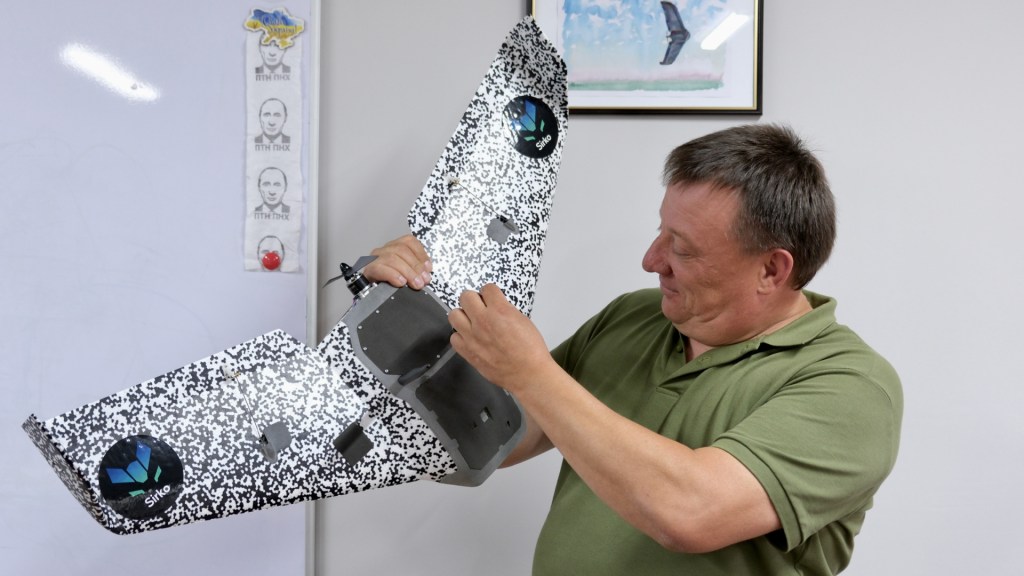
Krynychko, fifty-six, tells me that his Sirko drones (which each cost about $3,800) have won approval to be supplied to the front line. He is an example of a drone-maker brought into the industry by the war. He studied aviation engineering in Kharkiv but ended up as a businessman. In the first days of last year’s invasion, he met a friend who had joined the army. “I asked him, ‘How do you find Russians in our forests?’ He replied: ‘I go to the forest, and if they shoot at me, I know they are there.’” Krynychko thought he could use his engineering background to invent a homemade drone that could provide intelligence to the front line.
“I wanted not only to make a cool plane, but also one that could be made in the kitchen, and produced in large batches so that it could make a difference at the front,” he explains. A team of thirty people make up to 100 per month, which are mostly sold to Ukrainian individuals who donate them to the front line. Much kit now comes from such donations. Krynychko’s government contract means he can supply the army directly. He has also received NATO codification for the Sirko, which allows him to export them. “I will sell my drones to Brits,” he says.
The Sirko can transmit video from fifteen miles away and fly for forty miles on one battery charge. It can also turn off its own GPS navigation and fly back to base should it be detected by the enemy. This is helpful, because the Russians are good at GPS “spoofing,” where they down drones by scrambling their navigation.
Krynychko has the capacity to produce up to 2,000 Sirko drones a month, but needs quality components and financing in order to do so. Chinese companies have been going cold on supplying Ukrainian buyers, he says, showing a preference for Russians instead.
Krynychko offers one-week training for those working with his drones, but learning how to use reconnaissance aircraft needs serious tuition. To this end, private drone schools have sprung up all over Ukraine. There is no state regulation of how this should be done, just official criteria (the ability to fly the drone a certain distance, perform a set task without losing control of it and so on). To speed up the process, certification is overseen by the schools. Entrusting such crucial military work to new, untested schools is quite an experiment.
One of the schools is Drone Fight Club, hidden in a Kyiv suburb. When I arrive, I see no signposting. If its whereabouts were ever to be discovered, it would be a prime target for Russian missiles. The school is run by Vladyslav Plaksin, a professional pilot who now makes LuckyStrike and FPV drones and teaches soldiers how to use them.
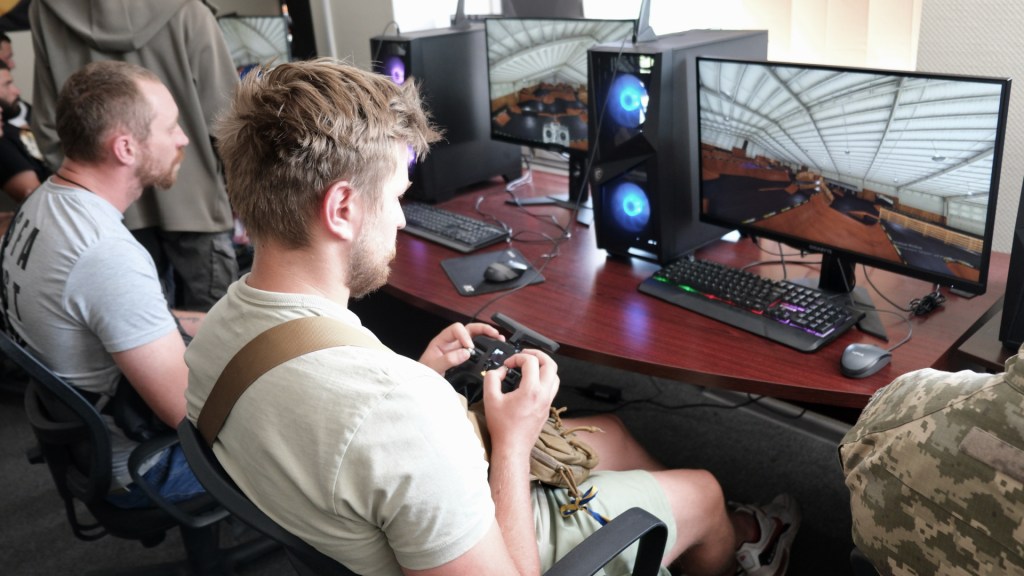
We enter a room with seven computers where twenty students are training to fly drones using simulators. They learn in twenty-minute sessions and spend two weeks practicing on computers. In week three, soldiers are taken to fields outside Kyiv for target practice with real drones. There’s a weekly exam, and anyone who fails it is removed from the school.
“I always say that before you give out a graduation certificate, you need to trust the student enough that if your loved ones were next to him when he was going to fly a drone with a bomb, they would be safe,” explains Plaksin. Operators attach the explosive and ready the drone for take-off: getting it wrong can have calamitous consequences.
“As a drone operator, you bear responsibility not only for yourself but also for those soldiers working with you. They provide cover with machine-guns, automatic rifles and grenade launchers, ensuring your drone’s safety, but they risk their lives for a purpose, because you bring results, and you are worth it,” he says.
Drone Fight Club provides free training for soldiers but refuses to grant certificates if commanders don’t allocate enough days for them to complete the course. “We know time is tight and that people are needed at the front,” says Plaksin. “But this drone could accidentally kill half a unit of soldiers. Even its battery can become explosive, if it is not properly connected.”
The government pays about $215 to the schools for every graduated FPV-drone operator. Some schools offer rapid three-day training courses, but fifty qualified specialists are better than 500 bad ones, he believes. The lack of regulation, while helpful in many ways, does increase the risk of cowboy drone schools offering shoddy training while still claiming money from the government.
I watch Etti, a Drone Fight Club instructor, train the students. He deliberately makes the job tricky at times to watch how the soldiers adapt: turning off the camera on the drone or slightly adjusting a setting. “There won’t be greenhouse conditions at war,” he says. “We try to provide every student with at least twenty hours of real flying per course.”
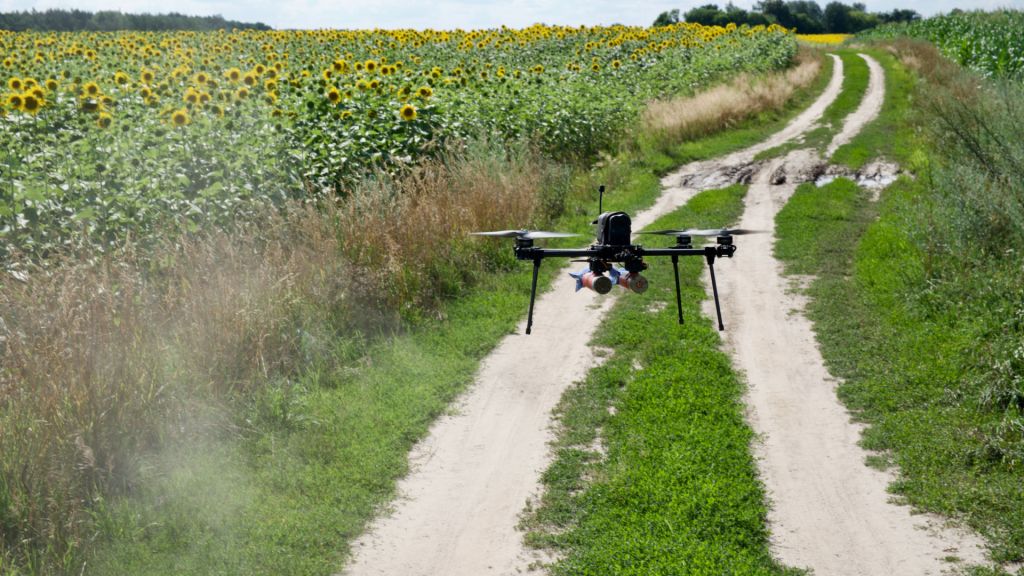
He tells me how he has seen soldiers change over the past year or so: “Young conscripts come to drone school with their eyes burning, eager to learn. They romanticize it. When they return from the war, I don’t see that flame any more. It goes out.”
So far, 10,000 operators have come through Fedorov’s Army of Drones program. He wants to double this number by Christmas. Some will be redeployed to drone assault companies; others may return to drone units within their brigades. Fedorov says that soldiers who train to fly drones are not guaranteed exemption from other duties. “This is war, and they could be reassigned as sappers or drivers.”
Too many pilots would be a good problem to have. For now, Fedorov wants as many drones and people to operate them as is possible. “There will always be a shortage of drones,” he says. “There will only be enough when we restore Ukraine’s borders of 1991.”
This article was originally published in The Spectator’s UK magazine. Subscribe to the World edition here.



